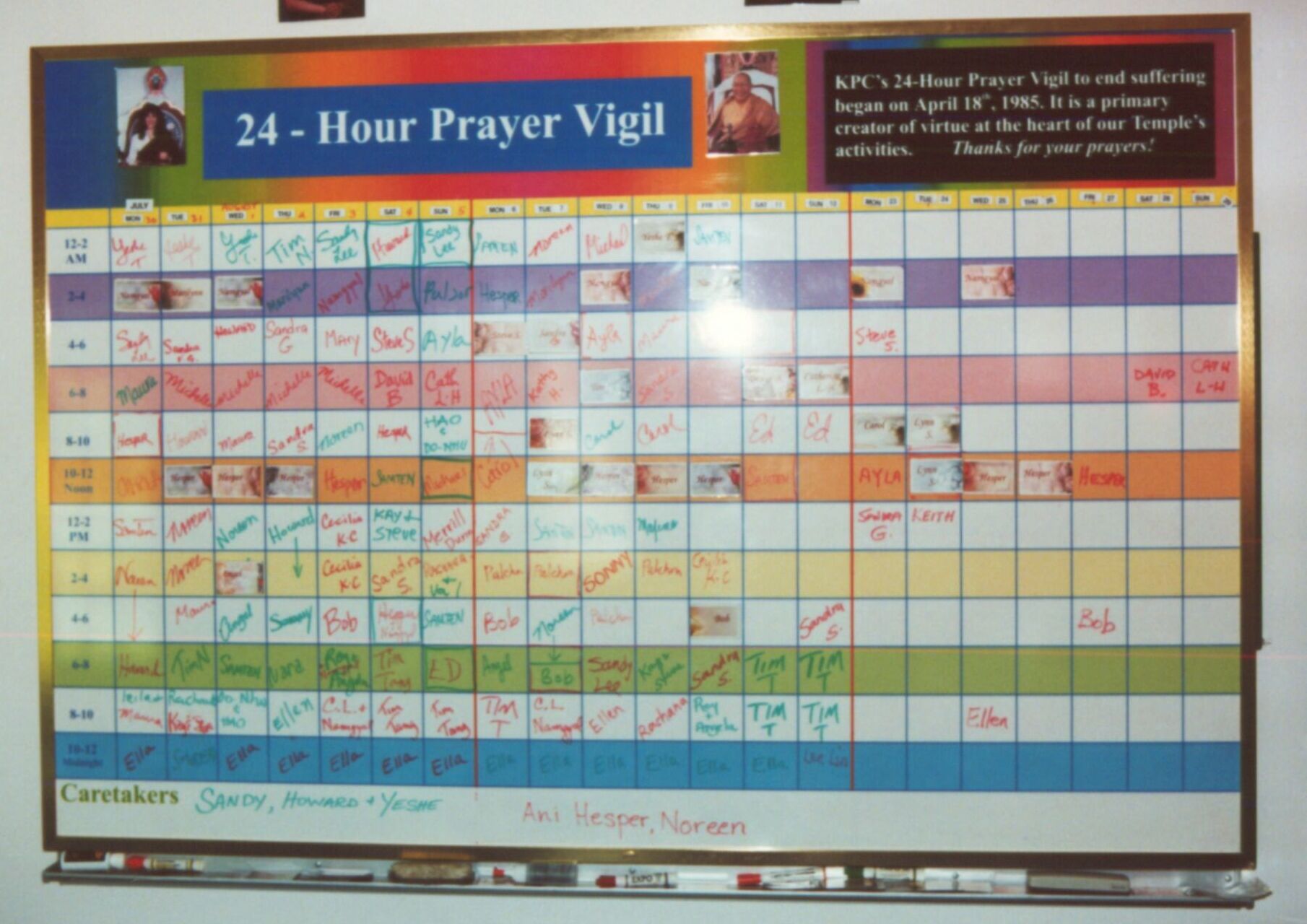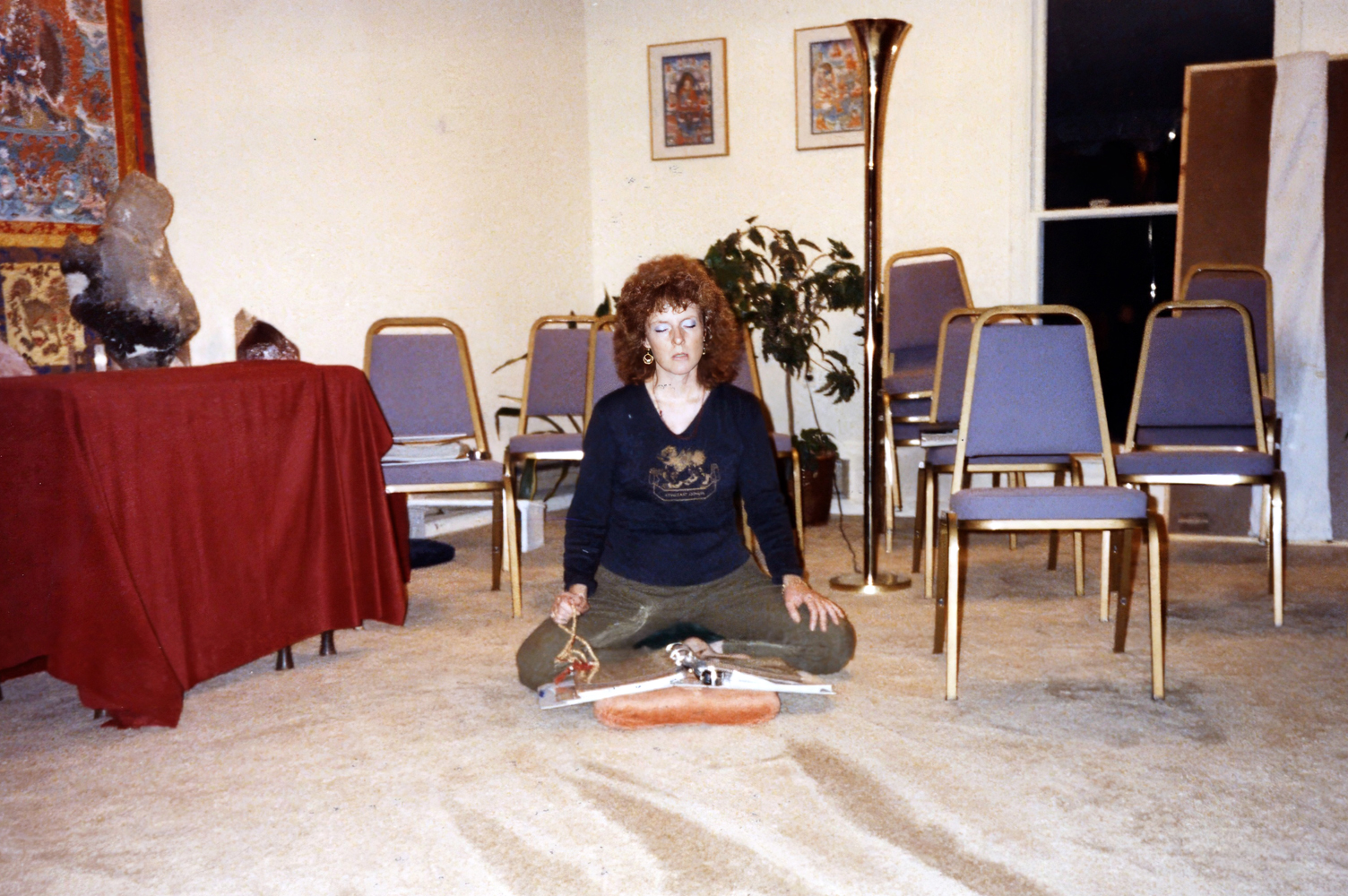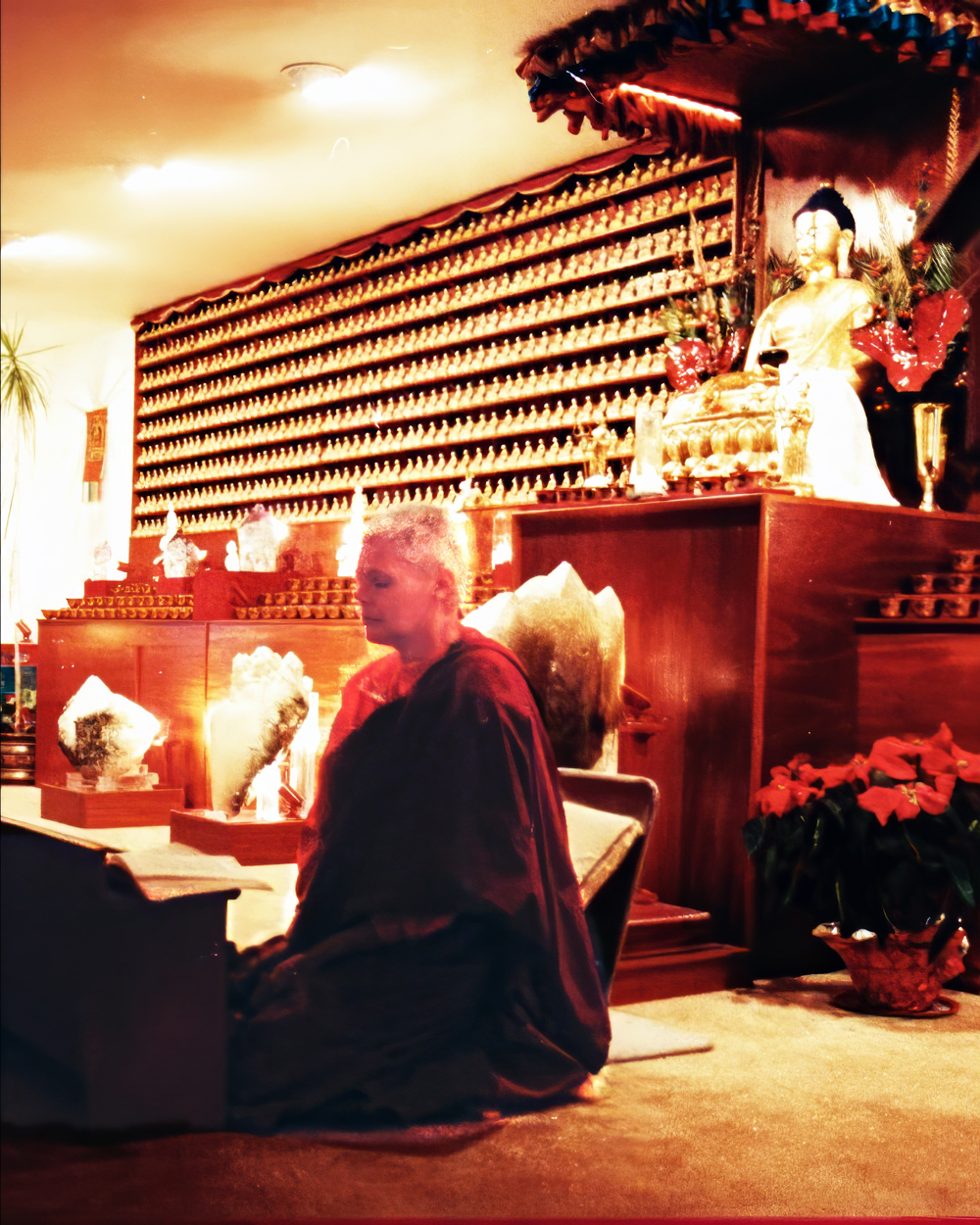Pray With Us

“Prayer is when you are in a state of awakening.” – Jetsunma Ahkon Lhamo
In Vajrayana Buddhism, the point of spiritual practice is not just to calm the mind, but to recognize the true nature of all phenomena. To that end, visualization and mantra recitation are used extensively on the path of awakening.
“As you generate yourself as a Buddha or Bodhisattva, reciting mantras and devotional prayers, your mind arises as a pure form. This is different from the ordinary mind that struggles to wake up each morning, dragging along its ego-clinging baggage or karma and looking for happiness in futile ways. This pure form is an expression of pure cognition, free of conceptualization and limitation. It is pure awareness, a state of pure luminosity. The deity we generate is an expression of that pure state. All phenomena are understood to be the deity’s body, voice, and activity. Thus, phenomena cease being something we grasp.” — Jetsunma Ahkon Lhamo
Traditionally known as sadhanas, each practice begins by cultivating the compassionate desire to liberate all beings from suffering, and ends with a prayer dedicating the virtue of the practice for the benefit of all sentient beings.

Participants in a group practice pray together in KPC’s prayer room.
Join Us for a Visualization Practice

Join us in prayer at our temple in Poolesville, MD, or online through webcast or Zoom. Click on a calendar event to reveal the location, link to join and a link to download the practice text. For descriptions of our most common practices, see Resources.
Join KPC’s Prayer Vigil for World Peace


KPC’s Prayer Chart, prior to the digital age.
On April 18, 1985, KPC Spiritual Director Jetsunma Ahkön Lhamo and her students made a commitment to pray nonstop until there was no more suffering. The 24-hour Prayer Vigil for World Peace has continued without interruption since then – 24-hours a day, 7 days a week, 365 days a year – for 40 years. While you’re at work, someone is praying. While you’re asleep, someone is praying. That’s more than 350,600 hours of continuous prayer, with over 150,000 prayer requests honored from around the world.

One of the original prayer vigil participants practicing during her shift in the 1980s.
The vigil takes place in the Prayer Room at Kunzang Palyul Choling (KPC) in Poolesville, Maryland, and has become known as the “heartbeat of the temple.” Participants sign up for two-hour shifts around the clock and vow to continue this round-the-clock prayer activity until all beings everywhere are free from suffering.

Venerable Ani Samla practicing during a prayer shift.
Joining in this sacred commitment is a deeply meaningful practice of compassion.
New participants are warmly welcomed and supported every step of the way.
To uphold the integrity of the vigil, all new practitioners must receive an empowerment—a Vajrayana ceremony to introduce us to our own innermost Buddha qualities, also called Buddha Nature, by planting the seeds of awakening in one’s mind. These seeds will ripen as one deepens in practice. Participants also take a class to learn the prayer practices, and shadow experienced students until they feel confident and are ready to take shifts on their own. With the blessing of KPC’s Spiritual Director, Jetsunma Ahkön Lhamo, you may then fully enter this powerful stream of continuous prayer.
Sign up now to become a KPC Prayer Vigil participant!



